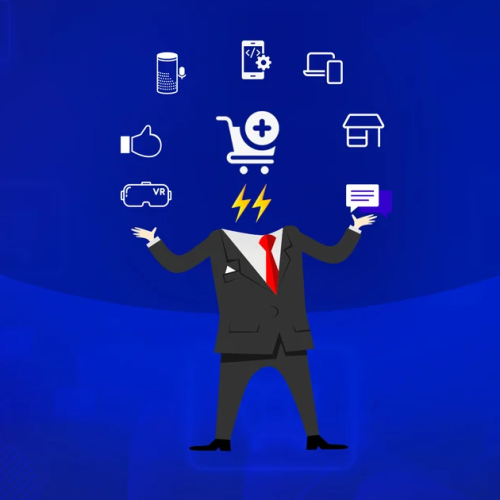Now, in the digital-centric world, businesses are increasingly relying on advanced IT support to streamline their operations and enhance productivity. One such technology that has revolutionized the realm of managed IT Support services is remote desktop support.
From simplifying troubleshooting and issue resolution to providing seamless end-user support, remote desktop support services have become essential for companies looking to navigate the dynamic landscape of managed services.
IT support has played a significant role in driving the creation and advancement of remote Desktop Support Services and controlling hardware troubles more exponentially to streamline the organizational work culture. Discover the essential steps for a successful launch of your remote IT support business by reading this article with me.
Understanding what’s called Remote Desktop Support Services?
Remote desktop support services enable employees to access digital assets and IT resources remotely, regardless of physical location.
This means that employees can troubleshoot technical issues, access critical files, and collaborate seamlessly with colleagues from anywhere in the world. The process involves establishing a secure connection between the user’s device and a remote support technician, who can diagnose and resolve issues in real-time.
What is and What does a managed service provider do?
A managed service provider is a company that offers services to manage and support a client’s IT infrastructure.
A Managed Service Provider (MSP) is a third-party company or vendor company that provides IT support services to a customer’s infrastructure and end-user systems remotely.
Small and medium-sized businesses (SMBs), non-profits, and government agencies hire MSPs to carry out diversified day-to-day management services such as network and infrastructure management, security, and monitoring.
MSPs often manage services daily, enabling clients’ IT infrastructure to perform seamlessly, and allowing them to focus on upgrading their services without bothering about extended system downtimes or IT infrastructure disruptions.
While a few MSPs have expertise in certain IT segments like data storage, others target vertical markets like legal, finance, healthcare, or manufacturing. Specialized services, such as remote firewall administration and other security-as-a-service offerings, are provided by managed security service providers. Managed print service providers are responsible for printer maintenance and supplying consumables. It’s common for MSPs to perform their duties remotely using the internet.
Why do industries Need Remote Desktop Support?
Managed service providers play a crucial role in delivering IT services to businesses of all sizes. By incorporating remote desktop support into their service offerings, MSPs can enhance their capabilities and provide efficient and effective support to their clients. Remote desktop support allows MSPs to troubleshoot issues quickly, reduce downtime, and deliver a superior customer experience, ultimately helping them stay competitive in the market.
What Is Remote Desktop Support?
It’s none other than back-office outsourcing services. It allows technical personnel to remotely access and troubleshoot computers, ensuring smooth operations and efficient problem-solving. In this article, we will delve deeper into the concept of remote desktop support and explore its importance in the world of technical assistance.
In another term, we called Remote desktop support refers to the process of assisting with a computer from a remote location using the internet or networking capabilities. Through this method, IT specialists can access a user’s computer, and view and modify network resources, applications, and files. It enables seamless troubleshooting, operating system support, upgrades and patch support, application installation and support, and antivirus assistance.
How Does Remote Desktop Support Services Work?
Remote desktop support services rely on a strong network connection and reliable tools to facilitate communication between the technician and the user’s computer. Let’s dig in deeper.
- Remote desktop support involves a technician accessing a user’s computer from a remote location via the internet or networking.
- The technician establishes a secure remote connection with the user’s device using specialized software.
- Once connected, the technician can view and control the user’s desktop, accessing network resources, applications, and files.
- The technician diagnoses and troubleshoots technical issues remotely without the need for the user’s physical intervention.
- They can install or update software, resolve errors, perform system maintenance tasks, and provide general technical support.
- The remote desktop support process is enabled by a strong network connection and reliable tools that facilitate seamless communication between the technician and the user’s computer.
- Remote desktop support minimizes the need for on-site visits, reducing downtime and increasing efficiency.
- Secure connections are established to ensure the confidentiality and privacy of sensitive data.
- Remote desktop support allows for knowledge retention and the development of long-term solutions by working directly with individual desktops.
- Businesses leverage remote desktop support to provide cost-effective, convenient, and secure technical assistance to end-users.
The remote IT technicians use specialized software to establish a secure remote connection with the user’s device. They can then diagnose and resolve technical issues without the need for the user to physically intervene. This eliminates the need for on-site visits and streamlines the troubleshooting process.
Benefits of Implementing Remote Desktop Support!
The benefits of implementing remote desktop support are manifold, both for businesses and MSPs:
- Efficiency and Convenience: Remote desktop support allows quick and efficient problem-solving. Technicians can remotely access a user’s computer and resolve issues without interrupting their workflow, reducing downtime and increasing productivity.
- Cost-Effective Solution: By leveraging remote desktop support, businesses can significantly save on costs associated with on-site visits. It eliminates travel expenses and minimizes the need for physical infrastructure, making technical assistance more affordable and accessible.
- Enhanced Security: Remote desktop support utilizes secure connections, ensuring the confidentiality and privacy of sensitive data. Unlike traditional troubleshooting methods, remote support minimizes the risk of physical theft or unauthorized access.
- Knowledge Retention: Remote desktop support enables technicians to work directly with individual desktops, allowing them to gain insights into recurring issues and develop long-term solutions. This knowledge can be shared and utilized within the organization for future problem-solving.
- Flexible Work Arrangements: Remote desktop support empowers employees to work from anywhere, promoting a more agile and collaborative work environment.
- Seamless User Experience: Remote desktop support streamlines IT operations and provides users with immediate assistance, enhancing overall satisfaction and productivity.
By leveraging remote systems and specialized outsourced IT teams, businesses can find and ensure quick, cost-effective, reliable, and secure complex IT problem solutions.
Why do Remote IT Support Services give business confidence?
Those days, businesses rely heavily on their IT infrastructure to operate efficiently and stay competitive. With the increasing complexity of technology, costly in-house infrastructure, and the need for prompt issue resolution, Remote IT Support Services have become crucial for organizations.
Remote Desktop Support Service executives offer businesses the confidence they need to tackle technical challenges effectively.
Here are some reasons why Remote IT Support Services give a business confidence.
Tech-advanced Issue Resolve:
Remote desktop support allows IT technicians to troubleshoot and resolve issues with no physical existence at the client’s location. This means faster problem settlement and reduced spare time for businesses, ensuring uninterrupted operations.
Cost-Effective Support:
By eliminating the need for on-premise visits, Remote IT Support Services significantly reduce travel costs and associated expenses. They can provide support to clients located anywhere in the world, enhancing the cost-effectiveness of their services.
Routinely maintain IT health to reduce unplanned downtime
IT Support Services technicians can remotely perform regular maintenance tasks, updates, and IT health checks. By taking a foresighted approach, potential issues are avoided, ensuring the smooth operation of clients’ IT infrastructure.
24/7 Convenience:
Remote IT support technicians can access client devices from anywhere, providing follow-the-sun support services for timely responses to issues, even beyond regular business hours. This boosts business continuity and customer satisfaction.
Client Amenity:
With remote IT support executives, clients can access expert IT support without waiting for on-site visits. This enhances the overall client’s amenity by promptly and efficiently addressing tedious IT issues, improving client satisfaction.
Scalability and Flexibility:
Remote desktop support executives can efficiently manage and support a considerable number of technical glitches simultaneously, making it a flexible solution for businesses of various sizes that easily scale to accommodate a growing number of applicants.
Resilient and Trusted Force:
Remote IT Support Service providers are responsible and trusted partners, safeguarding the company’s documents and work files stored in the cloud. With data stored securely, the chances of data loss or breach are significantly reduced.
Centralized Operations:
IT Support Services providers can leverage remote access software to centralize their support operations. This allows them to address multiple It operations from a single location, strengthening control, analysis, and the overall significance of their support services.
Solid Security Surveillance:
Many remote desktop support agencies employ advanced security measures, such as encryption software and two-way logging authentication, to ensure secure remote connections. This helps safeguard client’s sensitive data during support sessions, encouraging security and adherence.
Remote Training to Clients:
Remote desktop support can be used by IT Support Services for training sessions and collaboration. By working remotely, technicians can guide clients, demonstrate solutions, and collaborate on projects, promoting efficient collaboration and knowledge sharing.
So, Remote IT Support Services offer businesses the confidence they need to navigate the complexities of technology. Remote desktop support executive possessed all the qualities to execute daunting IT solutions. By partnering with Remote IT Support Services, businesses can confidently overcome technical challenges and focus on their core objectives.
Easy Takeaways:
Remote Desktop Support Services encapsulates the transformative impact of resilient IT infrastructure, revolutionizing the IT industry by offering a seamless working culture. The smooth access and control of remote IT support executives – offering an integral collaboration to the in-house team by providing technician efficiency by decreasing overhead expenses.
With Maven Technology at the forefront of enabling swift and effective Remote IT Support Services. By leveraging our remote IT support executive team, businesses can expect Decreased overhead, lower downtime, uninterrupted work schedule, enhanced productivity, and expanded services for long hours, highlighting the vital role of remote desktop support in modern IT operations.
Visit our service page to know more.




